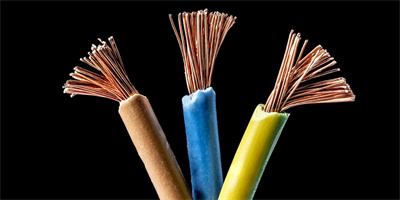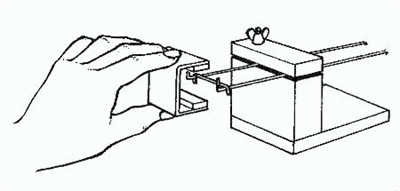Introduction:The fascinating world of magnets has captivated curious minds for centuries. We are often intrigued by the effects magnets have on various materials, but have you ever wondered what happens when you put a magnet on a wire? In this blog post, we will delve into the intriguing relationship between magnets and wires, exploring the science behind their interaction and the practical applications that arise from this magnetic connection.
Understanding the Basics:Before we dive into the specifics, let's start with a basic understanding of magnets and wires. Magnets possess a magnetic field, an invisible force surrounding them that exerts influence on certain materials, such as iron, nickel, and cobalt. Wires, on the other hand, are conductive paths made of metals like copper or aluminum that allow the flow of electric current.
 The Effect of a Magnet on a Wire:
The Effect of a Magnet on a Wire:When a magnet is brought close to a wire, it induces an electric current within the wire. This phenomenon is known as electromagnetic induction and is one of the fundamental principles of electromagnetism. It occurs due to the magnetic field produced by the magnet cutting through the wire, causing a change in the magnetic flux.

Faraday's Law:
The relationship between magnets and wires was first explored by Michael Faraday, a renowned scientist, in the early 19th century. Faraday's Law of electromagnetic induction states that a changing magnetic field induces an electromotive force (EMF) or voltage across a conductor, which in turn generates an electric current.
Practical Applications:
The interaction between magnets and wires has numerous practical applications in our everyday lives. Here are a few notable examples:
Electric Generators: Electric power generation relies on the principle of electromagnetic induction. Rotating a wire coil within a magnetic field induces an electric current in the wire, producing the electricity we use to power our homes, industries, and devices.
Transformers: Transformers are vital devices used in electrical power distribution systems. They consist of two sets of wire coils, the primary and secondary windings, wrapped around a magnetic core. By varying the number of turns in each coil, transformers can step up or step down voltage levels, allowing efficient transmission and distribution of electricity.
Electric Motors: Electric motors utilize the interaction between magnets and wires to convert electrical energy into mechanical energy. When an electric current passes through a wire coil placed within a magnetic field, it creates a rotational force that drives the motor's motion.
Induction Cooktops: Induction cooktops employ magnetic fields to generate heat directly in the cooking vessel. When an alternating current passes through a coil beneath the cooktop's surface, it induces a magnetic field. This magnetic field, in turn, induces an electric current in the pot or pan, rapidly heating it.
Conclusion:The interaction between magnets and wires is a captivating area of study with profound real-world implications. Through the principles of electromagnetic induction, we can harness the power of magnetic fields to generate electricity, transmit power efficiently, drive motors, and even cook our meals. The magnet-wire connection has revolutionized modern technology and continues to shape our lives in numerous ways.
So, the next time you see a magnet, remember the intriguing relationship it shares with wires. Behind that simple encounter lies a world of scientific discovery and practical applications that continue to shape our modern world.
Go to see the
enameled wire in LP.

